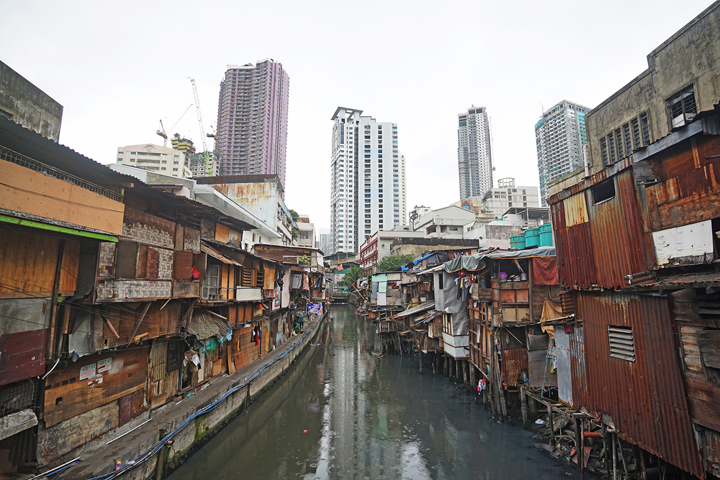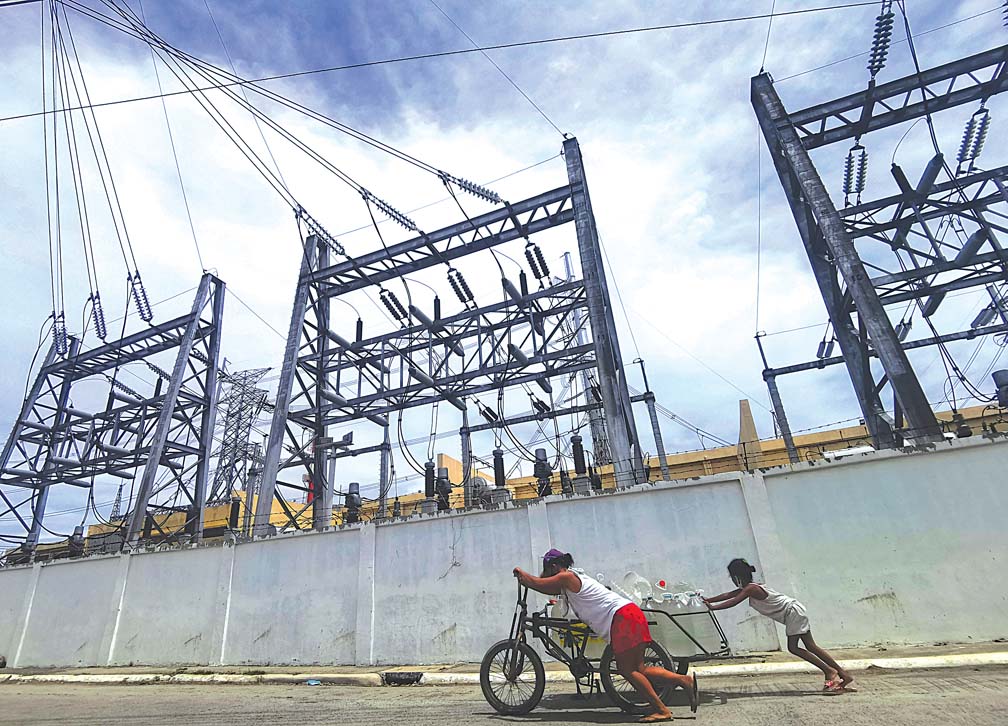“NOT our fault.” In so many words, representatives of the country’s power generation, transmission and distribution sectors declared separately that they are not to be blamed for the recent power outages that hit Luzon and Visayas.
The rotational power interruption on May 8 lasted for only one to two hours in the franchise areas of the Manila Electric Company (Meralco). If it had lasted for five hours, this may have resulted in about P556 million in economic losses, according to Philippine Independent Power Producers Association Inc. (Pippa) President Anne Estorco Montelibano.

In a recent webinar organized by the Philippine Institute for Development Studies (PIDS), she explained that the economic consequences of a power interruption is measured by the value of lost load (VoLL) or “the monetary indicator expressing the costs of interruption of electricity supply on a macro level.”
“In 2020, the country’s VoLL was at P20.65 per kilowatt hour (kWh). To put this into perspective, for every five hours of no electricity, our country loses about 500 megawatts (MW), which equates to P556 million in economic losses. It’s a hefty amount to lose for a developing country,” said Montelibano.
Who’s at fault?
HOWEVER, the power outages in the Visayas last month lasted more than five hours, according to the power bureau of the Department of Energy (DOE), significantly crippling businesses and government services.
After the power mess, blame was heaped on the National Grid Corporation of the Philippines (NGCP).
“The recent prolonged power outages in Panay and Negros, and the power interruption experienced yesterday [May 8] have been traced principally to inadequacies in the transmission system,” a statement from the office of DOE Secretary Raphael Lotilla dated May 9 said.
NGCP’s Bolo-Masinloc 230-kV transmission line 2 tripped on May 8. Thereafter, two units (630MW) of Masinloc power plant tripped. Together with other units already on forced outage, total power lost to the grid was 1,354MW.
“The generators tripped because the line tripped. It was the transmission line that tripped first, followed by the Masinloc tripping,” commented DOE Undersecretary Rowena Guevara.
The NGCP initially told the DOE that heavy rains and a lightning strike on its Bolo-Masinloc transmission Line 2 caused it to trip. With a “redundancy” in place, the load carried by Line 2 was automatically transferred to Line 1. NGCP said each of the lines is more than capable of singularly carrying the entire load of the Bolo-Masinloc facility at any time. However, NGCP said the tripping of two Masinloc units was both unexpected and undesirable.
A group of 28 generator members said it agrees with the findings of the DOE.
“The Pippa agrees with the findings of the DOE and we look forward to the completion and improvement of transmission line facilities in order to mitigate the effects caused about by line tripping,” Montelibano said as she stressed that these incidents were not the fault of the power generators.
Pippa, she said, has repeatedly emphasized the need to address transmission lines issues.
“Our main highways [of electricity] first need to improve, so when they traverse our local grids, energy delivery also improves. From Luzon to Visayas and vice versa, the lines are utterly congested. Undersecretary Guevara has said that without the congestion of the transmission lines, we may see a vast improvement and a decrease in power interruptions,” Montelibano recalled.
Holistic approach
NGCP, for its part, brushed off insinuations that the grid operator is solely to be blamed for the power deficiency. Most importantly, the NGCP stressed the need for a holistic approach to power planning.
“I do not believe that the purpose of the public statements is to assign blame. The electricity industry is interconnected and our operations are naturally affected by what the other sectors do,” said NGCP spokesperson Atty. Cynthia Alabanza.
More important, NGCP emphasized that protection settings of its customers connected to its system must remain consistent with its protection settings and other grid parameters.
“We have to coordinate with power plants if their settings are consistent with us. It has to be consistent with the settings submitted and tested by NGCP at the time they were connected. Everyone’s settings have to be consistent with each other. We are three here: generation, transmission and distribution. Otherwise, there will really be inconsistencies and avoidable interruptions,” Alabanza said.
NGCP has caught the ire of some lawmakers whenever brownouts occur; and when these happen they threaten to revoke its franchise, citing poor performance—even a security risk amid increasing maritime tensions between the Philippines and China in the South China Sea.
NGCP is 60-percent owned by Filipino companies Monte Oro Grid Resources Corp. and Calaca High Power Corp., while the remaining 40 percent shares are held by the State Grid Corporation of China (SGCC).
The China factor
CONCERNS have been raised about the SGCC’s stake in NGCP, i.e., that it may mean a foreign entity has control over NGCP.
NGCP said SGCC’s stake cannot and does not amount to control of the company because Filipinos own 60 percent of NGCP. Control over the company is vested in the Filipino shareholders, as envisioned by the Constitution.
“The government has always been fully aware of State Grid’s interest and participation in NGCP. State Grid was the foreign member of the consortium that won the concession over the transmission system after an open and competitive public bidding, which was conducted four times. This consortium eventually formed NGCP to act as the concessionaire,” NGCP Assistant Corporate Secretary Atty. Ronald Concepcion pointed out.
New round of scrutiny
NGCP is also being scrutinized for the delays in the implementation of transmission projects, delays that it explained were caused by factors beyond its control, such as the lockdowns during the Covid-19 pandemic.
Sen. Sherwin Gatchalian has filed a resolution calling for an investigation into the supposed delayed development of several transmission projects.
Gatchalian also urged the Energy Regulatory Commission (ERC) to penalize NGCP for the delays, saying these adversely impact the country’s electricity supply.
“I strongly suggest to the commission to enforce fines and penalties so we can impose discipline on NGCP. We are not seeing discipline because a lot of projects are delayed,” Gatchalian pointed out.
Meanwhile, the lawmaker also urged ERC to review the rate-setting methodology when it comes to NGCP’s transmission projects.
“Why are we allowing them to collect from consumers upon the commencement of the project without a defined timeline as to when they can continue to collect for a project? This leads to perverse incentives because if the project is delayed for 40 years, they can also collect for 40 years, especially that their rate setting has been delayed,” he said.
Delayed projects?
ACCORDING to the ERC, there are 72 transmission projects, including six Energy Projects of National Significance (EPNS) of NGCP that were not completed on time.
ERC Chairperson Monalisa Dimalanta said her office approved a total of 348 projects of NGCP.
Of these, 33 projects in Luzon, 19 in the Visayas, and 14 in Mindanao experienced delays in implementation. On top of the 66 projects cited by the ERC, there are six more projects that are significant energy projects for power generation, transmission and/or ancillary services, including those required to maintain grid stability and security, and which are in consonance with the policy thrusts and specific goals of the DOE Philippine Energy Plan (PEP).
Among the delayed EPNS projects are the Mindanao-Visayas Interconnection Project (MVIP), which was originally scheduled to commence operation in December 2020, the Cebu-Negros-Panay 230kV backbone Stage 3 project, which was originally set for completion also last December 2020, and the Hermosa-San Jose 500 kV transmission line project, which was originally set for completion in 2019.
Unavoidable
THE NGCP said that despite best efforts, delays in the completion of certain projects could not be avoided due to the pandemic. Construction works had to be temporarily suspended due to quarantine regulations.
Even when restrictions were eased, the NGCP could not fully resume work on the projects because of health and safety protocols. Other factors, such as disruptions in the supply chain, which affected the manufacturing and delivery of parts and equipment, as well as issues relating to rights of way, further contributed to the delays.
At the end of the day, each of the players in the sector—whether in generation, transmission or distribution—would have something to say about why it cannot be blamed each time outages happen. Yet the one thing no one can deny is that it’s always the public paying the price.
Image credits: Hendraxaverius | Dreamstime.com, BLUeringmedia | Dreamstime.com
























